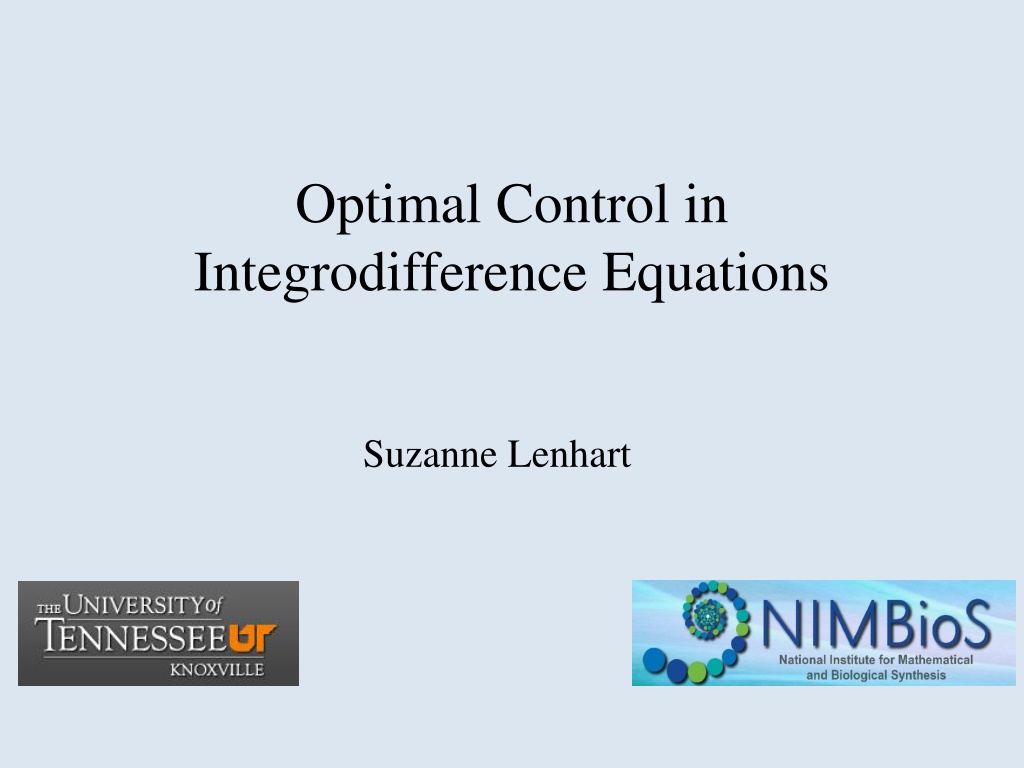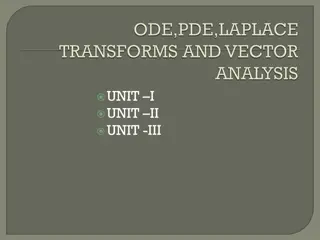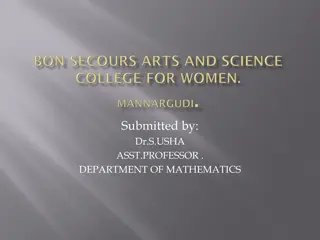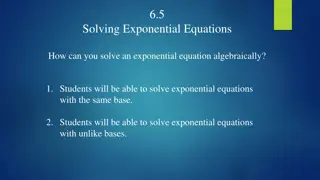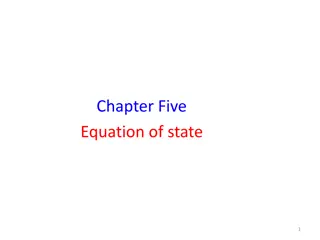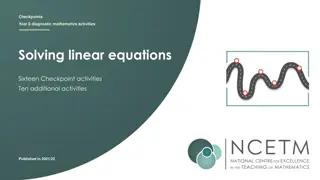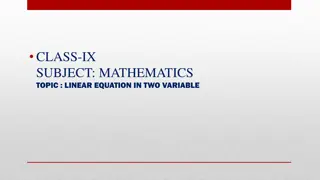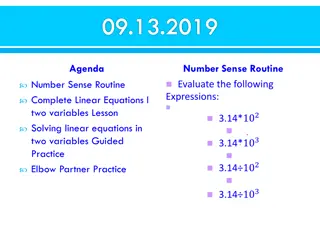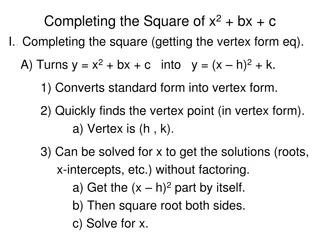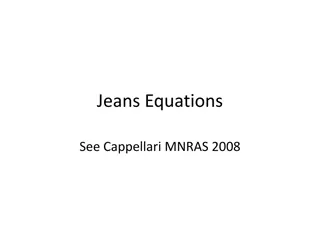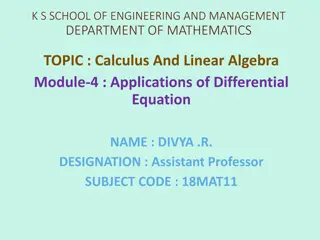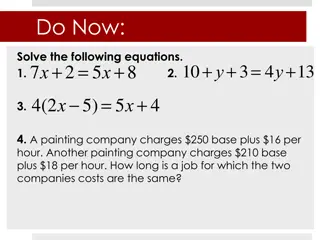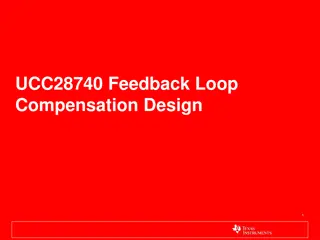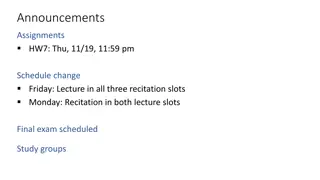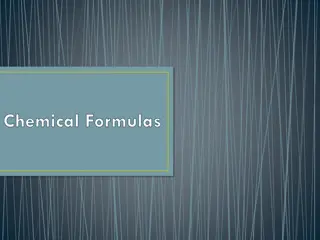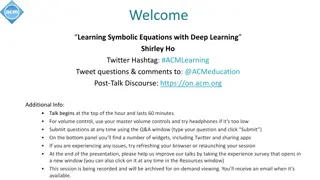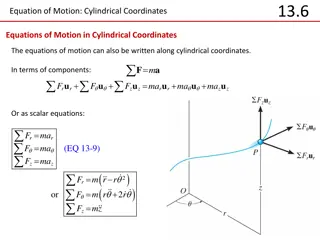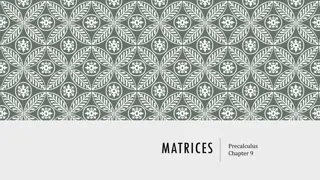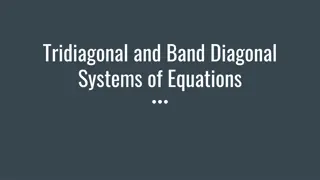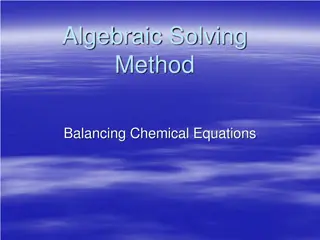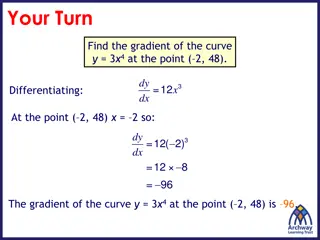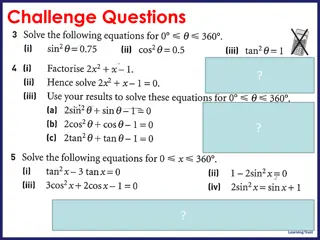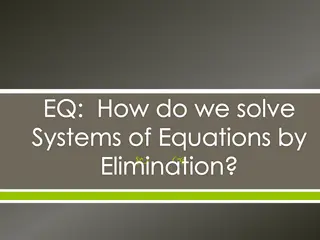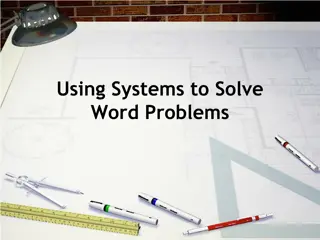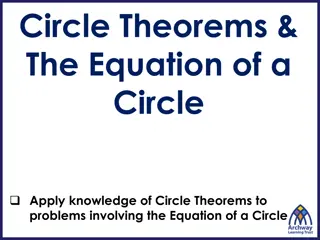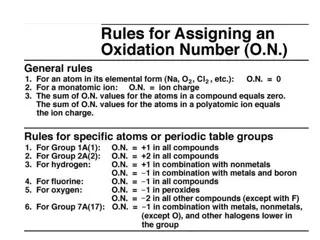Optimal Control in Integrodifference Equations by Suzanne Lenhart
Explore the concept of optimal control in integrodifference equations through the lens of Pontryagin's Maximum Principle. Learn about deriving necessary conditions for optimal controls and states, and applying them to models like harvesting systems. Gain insights into maximizing profit and improving decision-making processes in dynamic systems.
- Optimal Control
- Integrodifference Equations
- Pontryagins Principle
- Harvesting Models
- Maximizing Profit
Download Presentation

Please find below an Image/Link to download the presentation.
The content on the website is provided AS IS for your information and personal use only. It may not be sold, licensed, or shared on other websites without obtaining consent from the author. Download presentation by click this link. If you encounter any issues during the download, it is possible that the publisher has removed the file from their server.
E N D
Presentation Transcript
Optimal Control in Integrodifference Equations Suzanne Lenhart
Outline 1. Optimal Control Background 2. Harvest Example 3. Gypsy Moth
Lev Semyonovich Pontryagin, monument on a building on Leninsky Prospekt, Moscow.
Optimal control and Pontryagin's Maximum Principle Pontryagin and his collaborators developed optimal control theory for ordinary differential equations about 1950. Pontryagin's KEY idea was the introduction of the adjoint variables to attach the differential equations to the objective functional (like a Lagrange multiplier attaching a constraint to a pointwise optimization of a function). This principle gives necessary conditions for optimal controls and states. WE NEED TO DERIVE OUR OWN NECESSARY CONDITIONS HERE.
Basic Idea Start with a system for modeling the situation Decide where to put the controls and on their bounds ---balancing opposing factors in functional Design an appropriate objective functional After proving existence of optimal control, derive necessary conditions for the optimal control WILL GIVE MORE DETAILS Compute the optimal control numerically ---investigate dependence on various parameters
ORDER OF EVENTS IN OPTIMAL CONTROL OF HARVESTING MODELS WITH INTEGRODIFFERENCE EQUATIONS Lenhart and Peng Zhong (DCDS, 2013) EVENTS: GROWTH, DISPERSAL, HARVEST
Gypsy Moth Gypsy Moth Lymantria dispar Europe and Asia
Ch 2: Non-Spatial Goal Investigate management strategies in gypsy moth models using optimal control techniques. spatial temporal models with integrodifference equations
Population dynamics Pathogens Outbreaks collapse after 1-3 years Result of disease epizootics Gypsy moth nucleopolyhedrosis virus (NPV) Regulate population at high densities
THIS WORK M. Martinez, K. A. J. White and S. Lenhart, Optimal control of integrodifference equations in a pest-pathogen system, Disc. and Conti. Dynamical Systems B 2015. In US, continuing work of Sandy Leibhold and Greg Dwyer and Kyle Haynes and others
Model formulation ( ) = ( ) x ( , ) k x y ( ), y Z ( ) y N F N dy + 1 1 k k k ( ) = ( ) x ( , ) k x y ( ), y Z ( ) y Z G N dy + 1 2 k k k + ( , ) k x y ( ) y u dy 3 k N density of gypsy moth population Z density of virus population (nucleopolydrosis virus) u control (via Gypchek) with yearly time steps
Population Dynamics ( ) ( e ) = rN bZ ( ) x ( , ) x y N k N e dy k k + 1 1 k k ( ) ( ) bZ = + ( ) x ( , ) k x y 1 Z fZ N e d y k + 1 2 k k k + ( , ) x ( ) k y u y d y 3 k For F and G, we use ideas from Nicholson-Bailey model
Population Dynamics ( ) ( e ) = rN bZ ( ) x ( , ) x y N k N e dy k k + 1 1 k k the average per capita number of moths produced Probability that a moth does not become infected Density dependent probability that a new moth will survive until next generation
Population Dynamics Probability that virus survives over winter ( ) ( ) bZ = + ( ) x ( , ) k x y 1 Z fZ N e d y k + 1 2 k k k + ( , ) x ( ) k y u y d y Probability that Moth gets infected 3 k Number of viral spores Provided by a moth cadaver
Kernels Describe the dispersal of the population Laplace, fat tails
Objective functional 1 T ( ) dx + + + 2 k min u ( ) ( ) ( ) ( ) A N x dx A N x B u x C u x T T k k k k k = 0 k Cost for spray Function of control Damage caused by defoliation Density of Gypsy Moth 1 u 0 ( ) ku x u max max ku Lebesgue measurable
Results with no control (left) vs. control With constant spatial IC
Spatial Initial Conditions Aggregate
Conclusions New results in Optimal Control Theory Apply biocontrol where gypsy moth is at low densities In future, try other control techniques besides optimal control, like adaptive management, feedback control and adaptive control.
Acknowledgements Thanks
